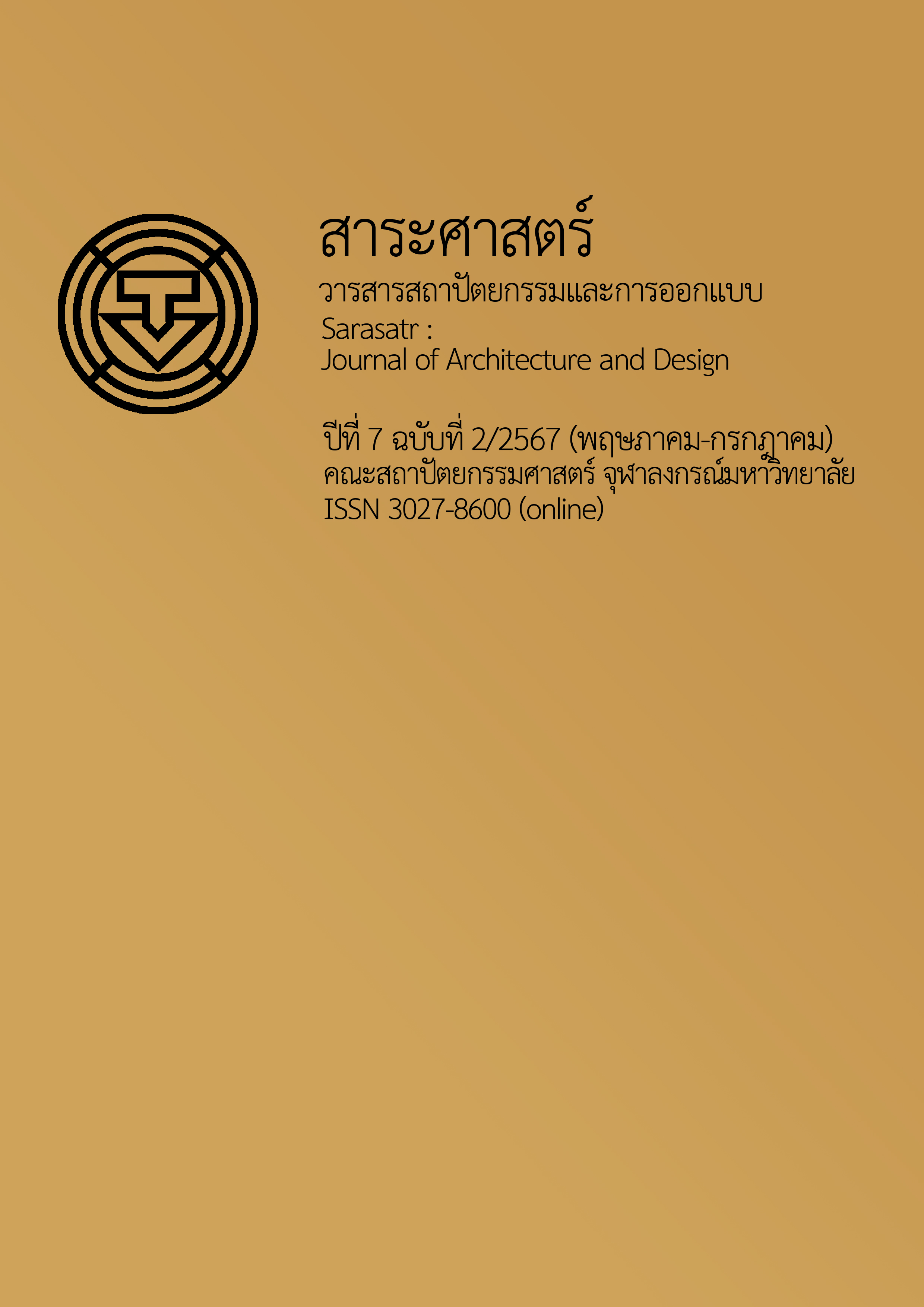Usage Behavior of Park and Ride for Secondary The Case study of Outer Area of Bangkok
Main Article Content
Abstract
Park and Ride facilities are crucial parts of the rail mass transit system, serving as transition points for commuters shifting from personal vehicles to rail transit services. The utilization of these facilities can be categorized into two types: primary parking for onward travel via electric trains, where commuters park their vehicles and continue their journey using rail transit, and secondary purpose usage parking for activities near the facility. These patterns are particularly observable in inner-city Park and Ride facilities in Thailand. Our research delves into the behavioral patterns associated with the secondary purpose of using Park and Ride. This study, which focuses specifically on the outer urban areas of Bangkok and its environs, is of the utmost importance for urban transportation planning. The selected study area encompasses four park-and-ride facilities: Klong Bang Phai Station, Bang Rak Noi-Tha It Station, Nonthaburi Intersection 1 Station, and Lat Krabang parking (Department of Highways). Our study uncovers a fascination at the Nonthaburi Intersection 1 Station, where many users utilize the Park and Ride services for secondary purposes rather than as a primary parking space. This unique usage pattern, accounting for 66.67 percent of all Park and Ride drivers, is predominantly observed among company employees commuting to work. These users typically cover an average distance of 300 meters on foot to reach their final destinations. This behavior aligns with the prevailing land use within a 500-meter radius of the Nonthaburi intersection, primarily characterized by commercial establishments and home offices. Furthermore, the strategic development initiatives aimed at establishing the Nonthaburi intersection as the principal commercial hub of the province are consistent with the observed travel objectives. The nuanced usage patterns across different Park and Ride facilities underscore the immediate need to incorporate these findings into future development guidelines. This is not just a suggestion, but a necessity to ensure the efficient and effective use of these transportation nodes. The urgency of tailoring strategies to accommodate the diverse needs of park-and-ride users is crucial for the future of urban transportation planning.
Article Details
References
กรมโยธาธิการและผังเมือง. (2556). กฎกระทรวงให้ใช้บังคับผังเมืองรวมกรุงเทพมหานคร พ.ศ. 2556. http://eservices.dpt.go.th/urbanplanning/fileload/reg/10010014.pdf
ข้อบัญญัติกรุงเทพมหานคร เรื่อง ควบคุมอาคาร พ.ศ. 2544. (2544, 3 สิงหาคม). ราชกิจจานุเบกษา. เล่ม 118 ตอนพิเศษ 75 ง.
เจตน์ ชุนถนอม. (2559). แนวทางการพัฒนาพื้นที่จอดแล้วจรเพื่อรองรับการเดินทางด้วยระบบขนส่งมวลชนระบบรางในกรุงเทพมหานคร [วิทยานิพนธ์ปริญญามหาบัณฑิต, ไม่ได้ตีพิมพ์]. มหาวิทยาลัยธรรมศาสตร์
นวภัทร์ กิ่มมณี. (2548). โครงการพัฒนาอาคารจอดแล้วจรเพื่อสนับสนุนโครงการรถไฟฟ้ามหานครสายเฉลิมรัชมงคล [วิทยานิพนธ์ปริญญามหาบัณฑิต, ไม่ได้ตีพิมพ์]. มหาวิทยาลัยธรรมศาสตร์.
ศูนย์วิจัยกสิกรไทย. (2559). รายงานการพัฒนาเพื่อความยั่งยืน 2559. https://www.kasikornbank.com/th/sustainable-development/SDAnnualReports/SD-TH-KBank59.pdf0
จุฬาลงกรณ์มหาวิทยาลัย. สถาบันการขนส่ง. และบริษัท อินฟรา พลัส จำกัด. (2560). รายงานแผนแม่บทจุดจอดแล้วจรในเขตกรุงเทพมหานครและปริมณฑล. http://www.cuti.chula.ac.th/research0/2560/60.1.pdf
Calthorpe, P. (1993). The next American metropolis: Ecology, community, and the American dream.Princeton Architectural Press.
Krejcie, R. V., & Morgan, D. W. (1970). Determining sample size for research activities. Educational and Psychological Measurement, 30(3), 607 – 610.
Spillar, R. J. (1997). Park-and-ride planning and design guidelines. https://trid.trb.org/View/473046
Stopher, P. R., & Meyburg, A. H. (1975). Urban transportation modeling and planning. https://trid.trb.org/View/61685
Vincent, M. (2007). Park and ride: Characteristics and demand forecasting. Land Transport NZ Research Report. http://worldcat.org/isbn/0478287410


